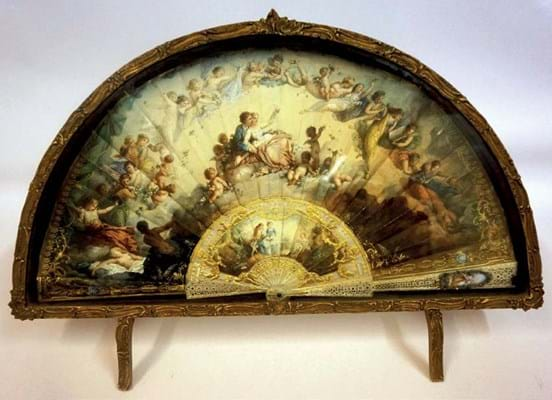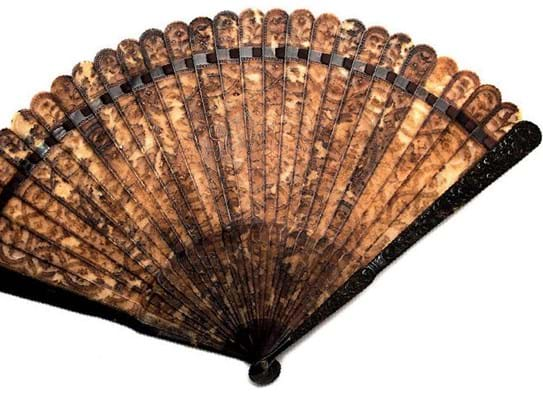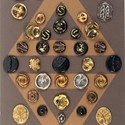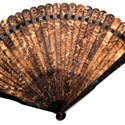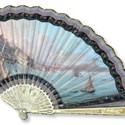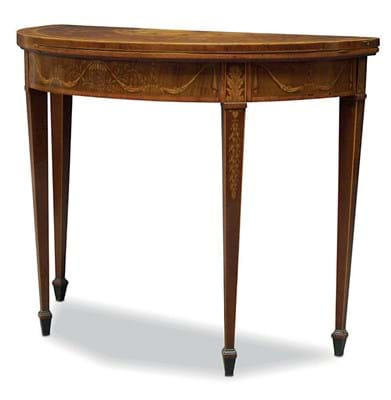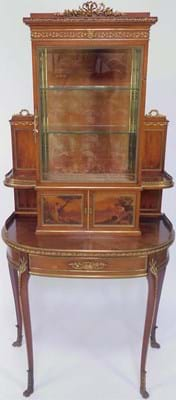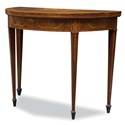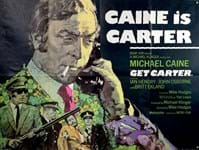While the days are long gone when one could buy anything by Lucie Rie for buttons, one can, at a price, purchase buttons by Rie – as was shown at the summer sale held by sewing-world specialist Bleasdales (20% buyer’s premium).
Among the 675 lots at the biannual sale at Warwick on July 25 was a collection of 43 glass buttons made by Rie and Fritz Lampl.
Like Dame Lucie, Lampl fled his native Vienna ahead of the Nazis, closing his Bimini Glass Factory there in 1938 and founding it, later renamed Orplid Glass, in London.
During the war years, the factory switched from producing decorative blown glass figures, cocktail sticks and the like, to buttons. Dame Lucie, who had to abandon her pottery venture after war broke out, worked at the factory until 1945.
The collection, estimated at £100- 200, was spotted by, among others, a ceramics collector who already has one or two Rie pots.
“I’m not a collector of buttons but I admire Lucie Rie,” he said. “For some time I’ve wanted to acquire some of her buttons, both glass ones like these from Bimini and the ceramic buttons she made independently.” Even if a rival at the sale had similar thoughts, he considered the collection a good buy at £3800. “I never thought the buttons would go for less,” he said.
The popularity of Rie buttons could be boosted further by an exhibition running until May 12, 2019, at the Centre for Ceramic Art in York titled Lucie Rie: Ceramics & Buttons. According to the centre, she “began producing ceramic buttons for the fashion industry, after spotting a gap in the market as many British button factories had been requisitioned for the war effort”.
For fans of fans
With the recent dispersal of a number of private collections, hundreds of fans have been offered at auction
houses across the country in recent months. The concern must have been that supply would exceed demand in a limited market.
But, at least for good-quality examples, there has been little sign of this happening so far – particularly as American and other overseas buyers are notably active.
The second tranche of the Arthur Blackborne Collection offered at Tennants (20% buyer’s premium) at Leyburn on July 21 put a further 194 lots onto the market after the first 250 sold well in May (see report in ATG No 2347). Around 90% of the lots sold for a hammer total of £83,000.
Top honours were split between a Chinese fan and a European one, each a classic of its kind. The c.1740 European fan, with 11½in (29cm) long guards and ivory gorge sticks, was decorated with straw to the monture and engraved vignettes of Europa and the Bull and Cupid to the double leaf. In generally good condition, it doubled expectations by selling to a UK collector at £3800.
The c.1790 Qing carved tortoiseshell brisé fan, with 11in (27cm) guard length, was carved with a central shield, trees, birds and flowers. It also made £3800, more than tripling the estimate, when it sold to a UK dealer.
There will be a further test of the market at Tennants in autumn when a collection of more than 400 quality fans from around 1720-1820 will be offered, the first 100-strong batch on September 22.
Best of 97 lots of fans which totalled £70,000 at Kingham & Orme (22% buyer’s premium) was a scarce c.1800 miniature Italian ‘Grand Tour’ example. With carved and pierced 6½in (17cm) ivory guards and sticks and double-leaf painted to both sides with scenes of Vesuvius smoking and erupting, the fan came in a contemporary box.
At the July 28 sale at Evesham it doubled the estimate, selling to an American collector at £3700.
The fan offered at Brown & Turner’s (17.5% buyer’s premium) Jedburgh sale on July 21 was the only example in a wide-ranging 360-lot sale. However, it was signed by French designer Jules Donzel, probably the greatest of 19th century names, and marked for the equally eminent maker and retailer Duvelleroy of Paris and London.
The c.1880, the 21in (54cm) wide, doubled-sided paper fan was painted with panels of young lovers, putti, a gilt crown and a crest. Set with about 100 small diamonds and rubies, it is similar to the one Queen Mary carried at a royal wedding that was offered among the first tranche of the Blackborne collection at Tennants.
It was in fine condition and, together with a glazed cabinet with giltwood frame, it sold to an overseas collector at £8000 against a £1000- 1500 estimate.
Meanwhile, a collection of fans first started in the 1950s will be dispersed at Chilcott Auctioneers in Devon on September 8 – also see Previews.
Furniture flourish
Summer sales also brought a welcome reminder that good-quality furniture can find buyers at worthwhile sums.
A classic George III mahogany and satinwood card table in the Adam taste tripled hopes at Roseberys’ (23% buyer’s premium) July 19 sale in West Norwood.
The 3ft in (94cm) wide table top was inlaid to the top with half circle patera, hung with pendant harebells and swags of flowers, and had a baize-lined interior. Estimated at £1500- 2500, it sold at £7000.
An English classic from a century earlier was the 6ft 7in (2m) long joined oak refectory table offered at Brightwells (17.5% buyer’s premium) on July 25-26. Pitched at £1500-2500, it sold to a north of England specialist dealer at £4500.
The global popularity of quality French 19th century furniture was underlined when a Louis XVI-style mahogany and Vernis Martin vitrine brought bids from the Continent and the Middle East at Bourne auction house Golding Young & Mawer (20% buyer’s premium) on August 8.
Standing 6ft 1in (1.85m) high and featuring ormolu mounts, the vitrine went comfortably over estimate when a UK dealer saw off the overseas competition with a bid of £6800.



